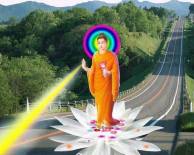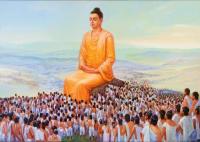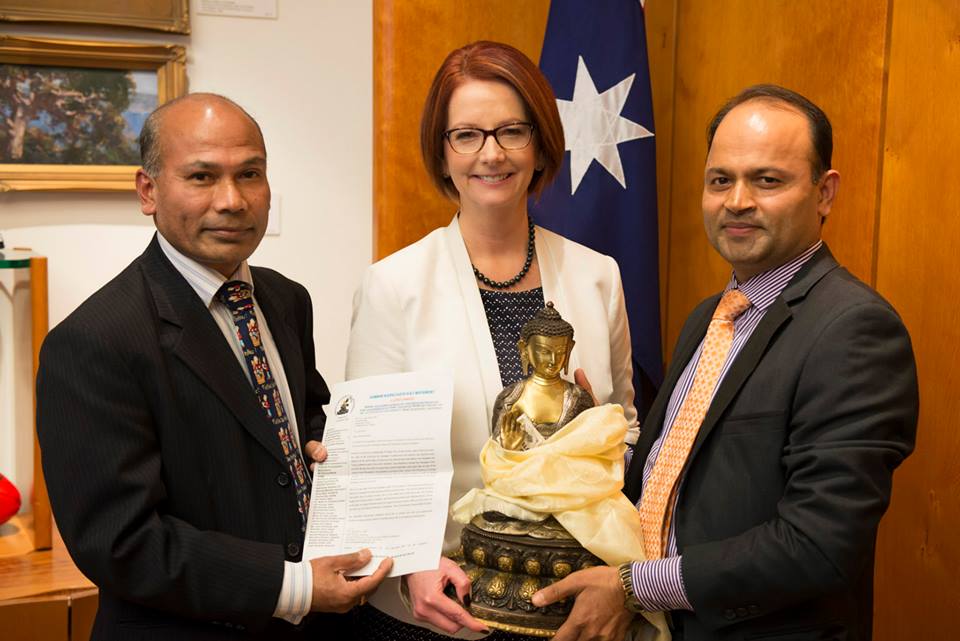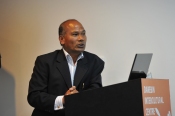With earthquake, Japan faces toughest crisis since WWII, prime minister says
Posted by Ram Kumar Shrestha on March 13, 2011
Japanese Prime Minister Naoto Kan’s call for unity comes as rescue teams struggle to reach the battered northeast and new fears emerge over a meltdown at the Fukushima nuclear complex.
By Barbara Demick and David Pierson, Los Angeles Times
Japanese Prime Minister Naoto Kan told reporters that his country was facing its most difficult challenge since World War II and called on his people to unite in the face of a devastating earthquake and tsunami and potential nuclear crisis.
War II and called on his people to unite in the face of a devastating earthquake and tsunami and potential nuclear crisis.
”This is the toughest crisis in Japan’s 65 years of postwar history,” Kan said during a televised news conference late Sunday. ”I’m convinced that we can overcome the crisis.”
The prime minister’s remarks came on a day when the head of police in Miyagi prefecture estimated that the death toll in his prefecture alone would exceed 10,000.
Photos: Scenes of earthquake destruction
While search-and-rescue teams struggled to reach battered parts of the northeast obstructed by mud and debris, new fears emerged over a meltdown at the Fukushima nuclear complex and trouble at another nuclear plant closer to Tokyo.
The Kyodo News Agency was reporting early Monday that a cooling system pump had stopped at the Tokai No. 2 nuclear power plant in Ibaraki prefecture. The same issue sparked the problems that have befallen the Fukushima reactors.
Workers there were using seawater Sunday in a desperate attempt to cool down three damaged nuclear reactors. One of the reactors lost its outer shell in a hydrogen blast Saturday and another was under threat of doing the same, said the country’s chief Cabinet secretary, Yukio Edano.
Videos show nuclear plant explosion
“Everybody in my neighborhood is being evacuated,” said Teruko Tsuchiya, 53, who lives four miles from the nuclear plant and was lining up outside a 7-11 convenience store waiting for food. “The buses are going back and forth. People are scared, of course, but they are trying to stay calm and it is proceeding in an orderly fashion.”
Japan’s nuclear and industrial safety agency said more than 70 people were believed to have been exposed to elevated levels of radiation, the Asahi Shimbun newspaper reported. Most were waiting to be airlifted from a field at the high school in Futaba, near Fukushima.
The International Atomic Energy Agency in Vienna said it was told by Japanese officials that they would distribute iodine tablets to residents near the plant. Iodine is known to protect against thyroid cancer that can develop from radiation poisoning.
Government officials tried to allay fears, saying the level of radiation was not high enough to pose a serious health risk.
“Even if a blast were to occur in the building containing the [other] reactor, the government doesn’t think the levels of radiation would affect the health of residents who have evacuated the area,” Edano said. “But the fact that we can’t rule out the possibility of a blast is likely to cause some concerns.”
In his remarks to the press, Kan said 12,000 people had been rescued, including about 5,800 people from Kesennuma, a city in Miyagi prefecture hit especially hard by the tsunami. Kan said 100,000 soldiers would be deployed to help victims of Friday’s magnitude-9 quake.
In one of the unlikeliest rescues, Japanese coast guard reportedly pulled to safety Sunday a 63-year-old man who had been floating on the roof of his home nine miles off the coast of Soma city, in Fukushima prefecture.
The Ronald Reagan, a U.S. Navy aircraft carrier, was anchored off the coast of Sendai on Sunday, said Stephen Valley, a spokesman for U.S. Forces Japan. The nuclear-powered ship is being used as a floating refueling station for Japanese military and coast guard helicopters flying rescue missions in the area and delivering emergency food supplies.
With nearly 6 million homes without power, Kan said Japan would administer rolling blackouts to preserve what electricity remained.
Adding to the misery have been a series of punishing aftershocks, some of which had been greater than magnitude-6.
The Japan Meteorological Agency said there was a 70% probability of a magnitude-7 quake in the next three days.
In Sendai, a city close to the epicenter, residents were charging their cellphones on a generator set up by the municipality for traffic lights.
“We’re stealing just a little electricity,” said Sutomo Goto, 38. “Just enough for the cellphones. People were going crazy without phones. There is no information since we don’t have TV. But we’re OK here. Everything within five kilometers of the coast has been washed away.”
Saeko Abe, a nurse in the city, said power was restored in her clinic, which gave her an opportunity to watch television. When the 38-year-old nurse saw footage of the tsunami washing over the beachfront, she gasped.
“It is all washed away. Devastated,” said Abe, who was heading home in the pitch darkness on a bicycle. “My first cousin, she just had a baby, and we don’t know what happened to her. She lived by the beach. Her parents can’t get down there to look. She hasn’t shown up at the refugee center.”
Abe said that people are experienced in dealing with tsunamis in her hometown. But this one didn’t give them enough time.
“It was almost simultaneous, just a few minutes,” she said. “People went to their roofs but were washed away just the same.”
Related:
Fear, skepticism as nuclear crisis builds
9.0 Japan earthquake shifted Earth on its axis
Japan’s massive earthquake has little effect on culture’s impeccable manners
barbara.demick@latimes.com , david.pierson@latimes.com
@latimes
















































Leave a comment